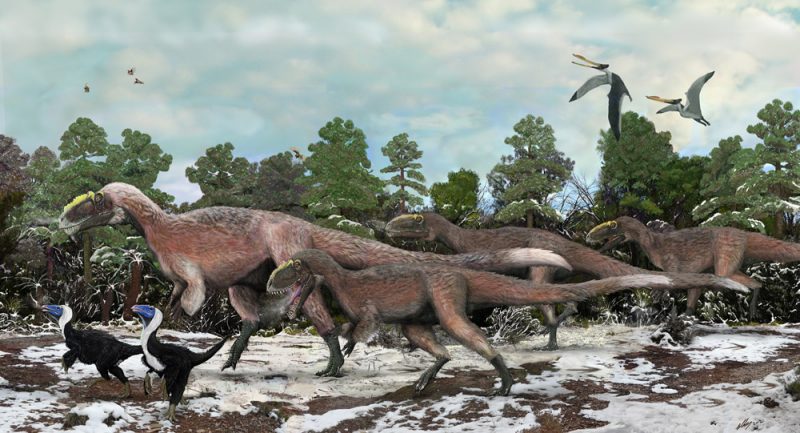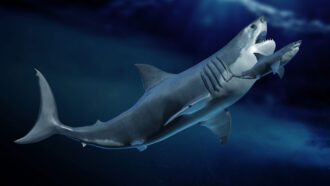Fluffysaurus
Newfound fossils belong to giant feathered dinosaurs

Fossilized dinosaur feathers recently unearthed in China reveal one of the most fearsome fluffy beasts to have ever stalked prey on this planet. The feathers were found on three skeletons that belong to a new species of dinosaur, say paleontologists studying the fossils. One of these giant, meat-eating animals probably weighed as much as a car and stretched 9 meters (nearly 30 feet) from tip to tail.
The new dino species, found in 125-million-year-old rock, has been named Yutyrannus huali, which translates to “beautiful feathered tyrant.” Feathered dinos are nothing new, but they’re usually much smaller. Y. huali is now the biggest known feathered dino.
“It changes the way we really look at things — from these big, scaly, Jurassic Park animals to ones that were big and fluffy,” Mark Norell told Science News. Norell, a paleontologist at the American Museum of Natural History in New York City, did not work on the new study. Paleontologists like Norell study the remains of prehistoric plants and animals preserved in ancient rocks to understand the history of life.
The newly unearthed skeletons came from one adult and two young dinosaurs. Based on studies of the bones, the scientists reported that all three sets came from the same type of animal, a never-before-identified cousin of the famously ferocious Tyrannosaurus rex. These dinos were theropods, which means they ran on two legs and ate meat.
The fossilized feathers measured at least 15 centimeters (nearly 6 inches) long — about the length of a ballpoint pen — and appeared to cover the dinosaur’s skin. Thus, the dinosaur might have looked a little shaggy, Corwin Sullivan told Science News. Sullivan, a paleontologist at the Institute of Vertebrate Paleontology and Paleoanthropology at the Chinese Academy of Sciences in Beijing, worked on the new study.
Because the skeletons are missing some of their bones, it’s difficult to know how much of the animal’s body was hidden behind feathers. “For the vast majority of dinosaurs we only have bone. We don’t have feathers or featherless skin,” Sullivan told Science News.
Sullivan and his colleagues, and Norell, say feathers may have evolved to help dinosaurs attract mates. To any smaller dinosaur being chased by these fluffy predators, however, those feathers would have been anything but attractive.
POWER WORDS (adapted from the New Oxford American Dictionary)
evolve To develop gradually over successive generations.
predator An animal that naturally preys on others.
theropod A meat-eating dinosaur of a group whose members are typically bipedal (walk on two legs) and range from small and delicately built to very large.
fossil The remains or impression of a prehistoric organism preserved in petrified form or as a mold or cast in rock.
paleontology The branch of science concerned with fossil animals and plants.







